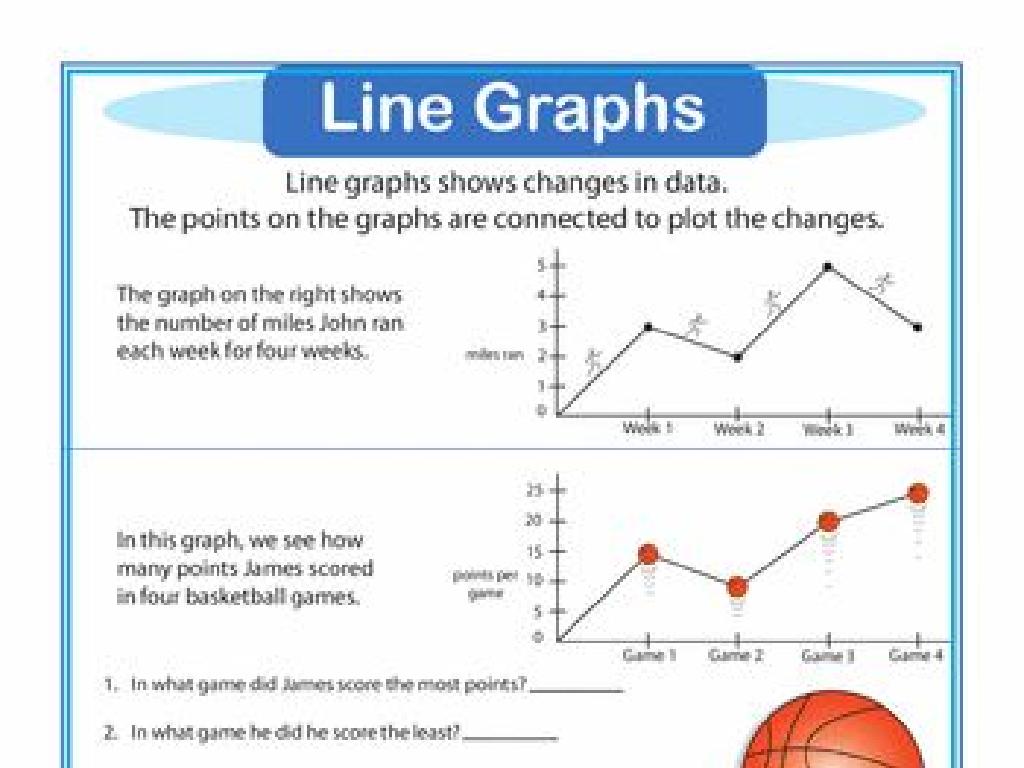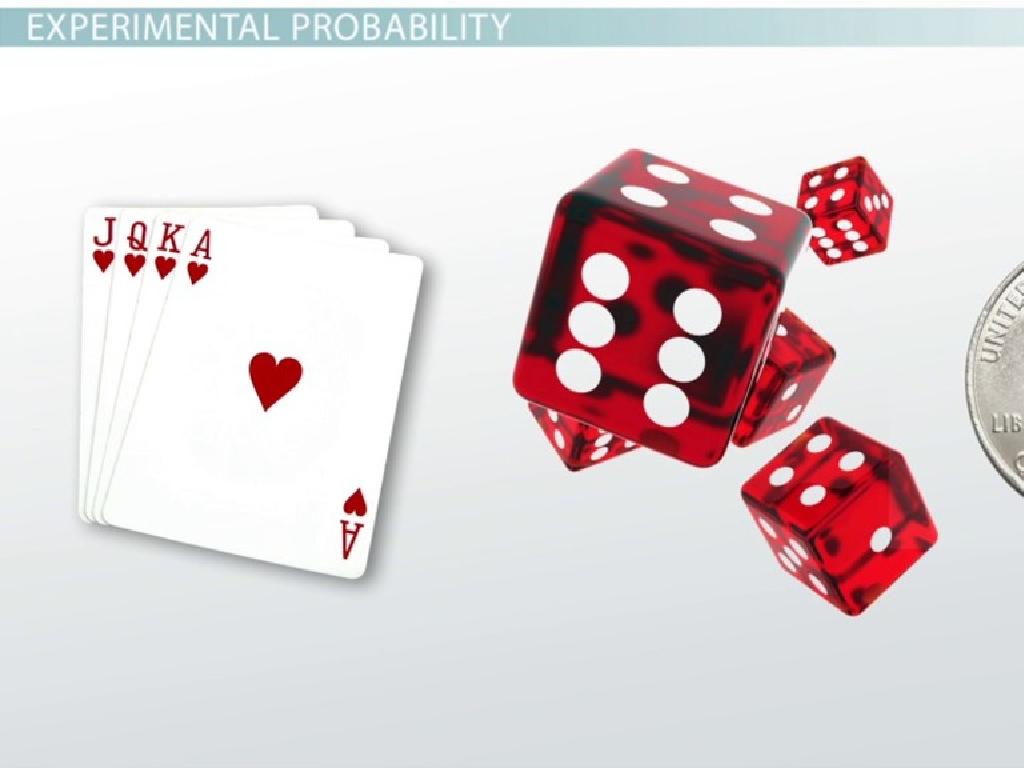Add, Subtract, Multiply, And Divide
Subject: Math
Grade: Third grade
Topic: Mixed Operations
Please LOG IN to download the presentation. Access is available to registered users only.
View More Content
Welcome to Mixed Operations!
– Learning about Mixed Operations
– Adding and subtracting numbers
– Combining numbers to find a total or difference
– Multiplying and dividing numbers
– Finding product and quotient of numbers
– Importance of all four operations
– Helps solve various math problems in life
|
Today’s lesson introduces students to the concept of Mixed Operations, which includes addition, subtraction, multiplication, and division. It’s crucial for students to understand how these operations work both individually and when used together. Start by reviewing each operation separately, using simple examples. Then, demonstrate how these operations can be combined in longer equations. Emphasize the importance of knowing all four operations, as they are the foundation for most mathematical concepts they will encounter in the future. Use real-life scenarios, such as shopping or cooking, to show how mixed operations are used daily. Encourage students to practice with a variety of problems to build their confidence and proficiency.
Adding Numbers: Let’s Learn to Add!
– Adding means combining numbers
– When we add, we find the total or sum of numbers
– Example with apples
– If you start with 2 apples and get 3 more, you have 5 apples in total
– Practice addition on the board
– We’ll add different numbers together to see what we get
|
This slide introduces the concept of addition to third-grade students. Start by explaining that adding is like putting things together to see how much you have in all. Use tangible examples like combining apples to make the concept relatable. Show the students how to add numbers using the example provided, and then invite them to the board to try adding different sets of numbers. This interactive approach helps solidify their understanding of addition. Make sure to provide praise and support as they learn. Prepare to offer additional examples if needed and ensure that each student has the opportunity to practice.
Subtracting Numbers: Let’s Learn!
– Understanding subtraction
– Subtracting means taking away from a total
– Real-life subtraction example
– If you start with 5 oranges and give 2 away, you have 3 left
– Let’s practice subtraction together!
– We’ll do fun subtraction problems as a class
|
This slide introduces the concept of subtraction to third-grade students. Begin by explaining subtraction as the process of taking one number away from another. Use relatable examples, like sharing fruit, to illustrate the concept. For instance, if a student has 5 oranges and gives 2 away, they subtract 2 from 5 to find out how many oranges they have left. Engage the class with a practice activity where students can work on subtraction problems together. Encourage them to use objects like counters or drawings to visualize the process. The goal is to make them comfortable with basic subtraction and to understand its practical applications in everyday life.
Multiplying Numbers
– Multiplication is repeated addition
– Example with sticker packs
– If 1 pack has 3 stickers, 4 packs have 3+3+3+3 or 4×3 stickers
– Let’s practice multiplying!
– We’ll multiply numbers to find answers together
– Multiplication is fun and useful
|
This slide introduces the concept of multiplication as a form of repeated addition, which is a foundational skill in third-grade mathematics. Start by explaining that when we multiply, we are adding the same number several times. Use the sticker pack example to illustrate this point: if one pack has 3 stickers, then 4 packs would have 3 stickers added together 4 times. This can be shown as 3+3+3+3, which is the same as 4 times 3. Encourage the students to visualize the concept with real objects or drawings to aid their understanding. After explaining, engage the students with practice problems where they multiply numbers together. Emphasize that multiplication is not only fun but also a very useful skill in everyday life. Provide several examples and ensure to give students time to work through problems with guidance.
Dividing Numbers: Sharing Equally
– What is dividing?
– Dividing means splitting into equal parts or groups.
– Dividing with cookies example
– If 10 cookies are shared with 5 friends, each gets 2 cookies.
– Practice division together
– Division is fair sharing
– Division ensures each person or group gets an equal amount.
|
This slide introduces the concept of division to third-grade students by relating it to the idea of sharing equally among friends. Start by explaining that division is a way of splitting a number into equal parts. Use the cookie example to make it relatable and easy to visualize. After discussing the example, engage the students in a hands-on activity where they can practice dividing numbers with objects or illustrations. Emphasize that division is used to make sure everyone gets the same amount, which is a fair way to share. Encourage students to think of other situations where they might need to divide things equally, such as sharing toys or snacks.
Mixed Operations: Using Multiple Steps
– Understanding mixed operations
– Example problem with stickers
– If 1 pack has 4 stickers and you buy 3, how many stickers in total?
– Step-by-step solution
– Multiply the packs by stickers, then subtract the ones you give away.
– Practice mixed operations
– Try solving similar problems on your own!
|
This slide introduces the concept of mixed operations to third-grade students. Start by explaining that sometimes, solving math problems involves more than one step and different operations. Use the sticker example to show how to approach a problem with multiple steps: first, multiply to find the total number of stickers, then subtract the ones given away. Walk through the problem step by step with the class, ensuring they understand each operation involved. After the example, encourage students to practice with similar problems, reinforcing the concept of mixed operations and building their confidence in solving them.
Class Activity: Math Relay!
– Split into teams for a math challenge
– Solve mixed operation problems
– Add, subtract, multiply, or divide as needed
– Pass to the next teammate after solving
– First team to finish wins a prize!
|
This activity is designed to encourage teamwork and quick thinking as students work together to solve mixed operation math problems. Before starting, explain how mixed operations work and give an example of each (addition, subtraction, multiplication, division). Make sure each team has an equal number of problems to solve and that the problems are appropriate for their skill level. Monitor the activity to ensure fair play and to help any team that may be struggling. Possible prizes could be extra recess time, a homework pass, or a small treat. This activity not only reinforces math skills but also promotes a fun and competitive learning environment.
Conclusion & Homework: Mixed Operations Mastery
– Congratulations on learning mixed operations!
– Homework: Complete the mixed operations worksheet
– Practice addition, subtraction, multiplication, and division
– Use class steps for solving problems
– Remember the order of operations and the methods we used
– Be ready to review answers in class
|
Well done on today’s lesson on mixed operations! The homework is designed to reinforce the concepts learned in class. Ensure the worksheet includes a variety of problems that require the use of addition, subtraction, multiplication, and division. Remind students to follow the order of operations and the specific steps we’ve practiced for each type of problem. This will help them approach each question methodically. In the next class, we’ll go over the worksheet answers together, allowing students to ask questions and clarify any doubts they may have. Encourage them to try their best and remind them that making mistakes is a part of learning.





